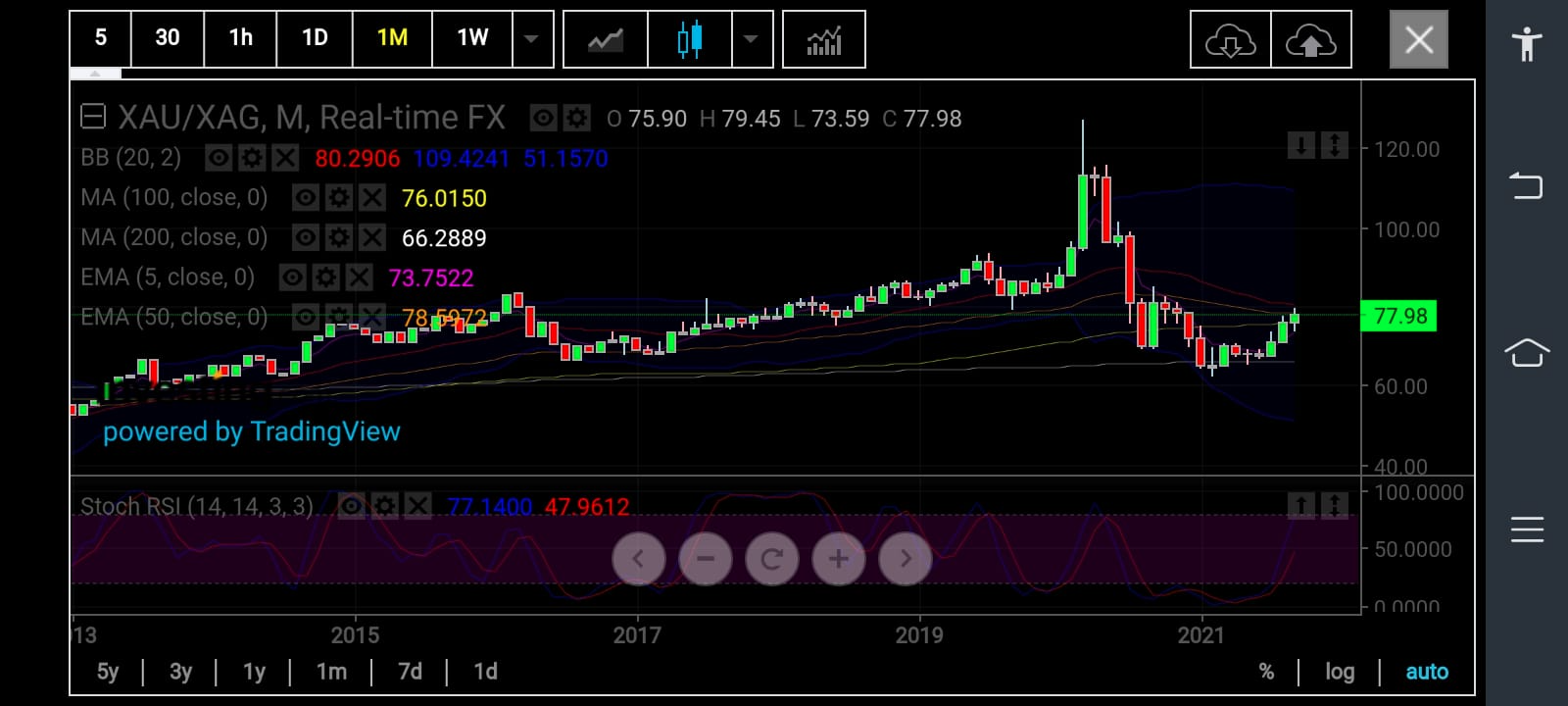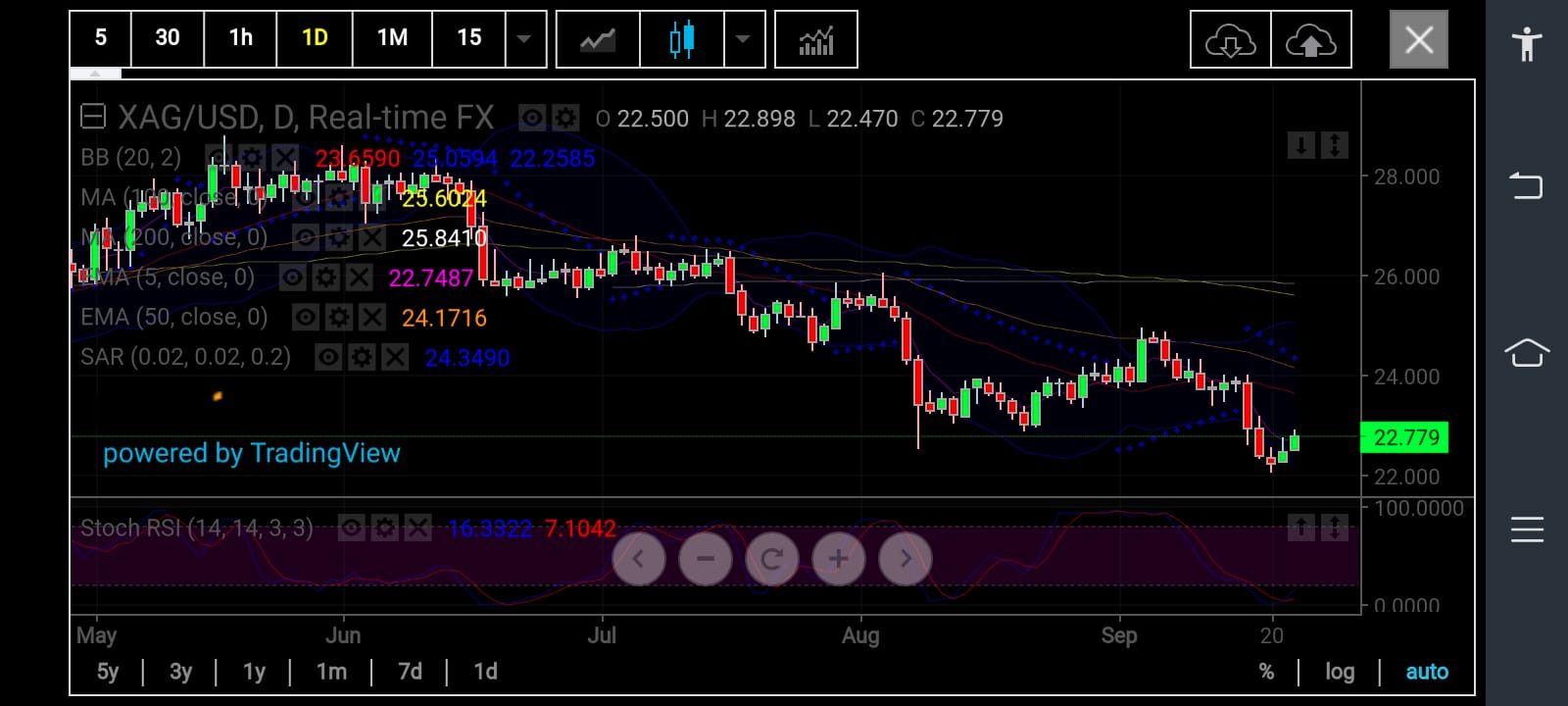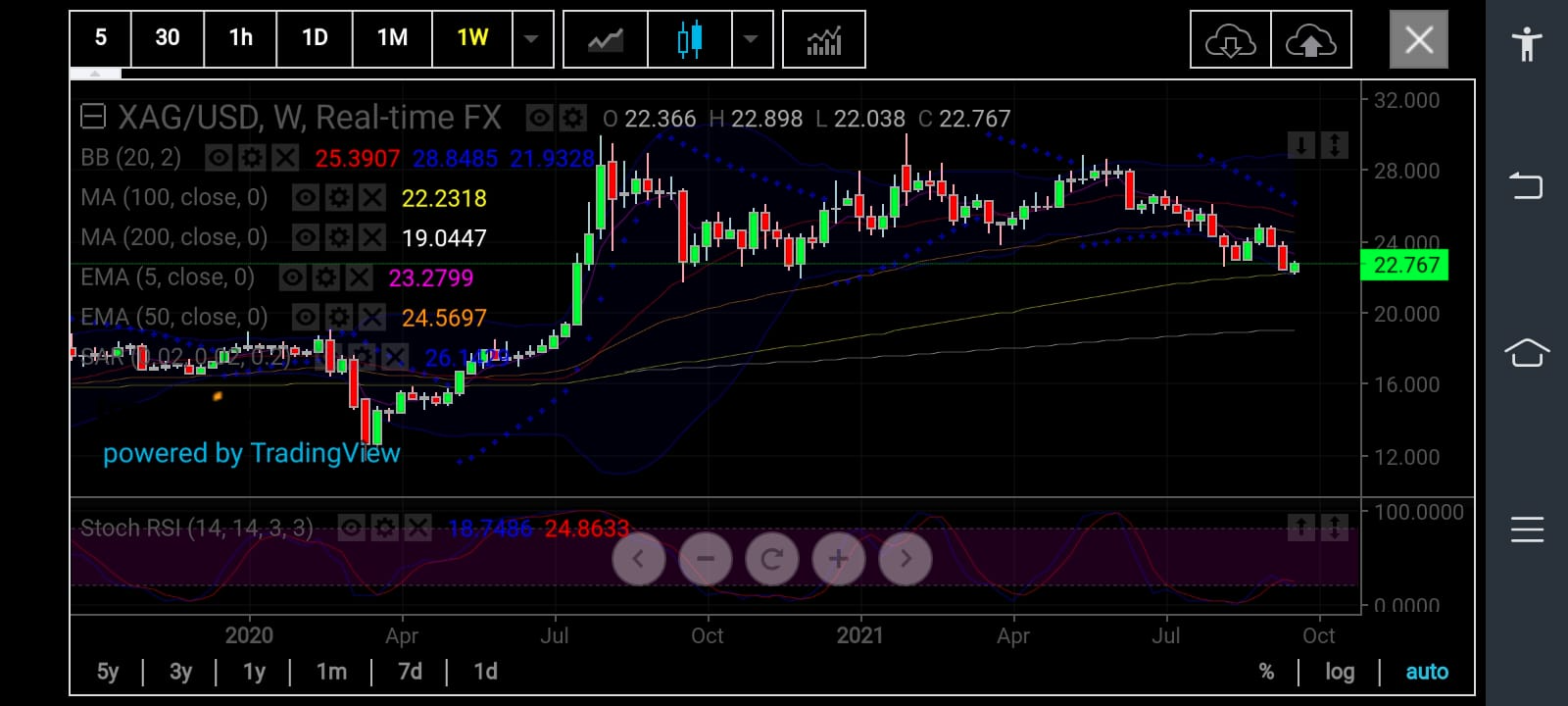The “poor man’s gold” is having a particularly poor stretch.
Silver is in the red for a fourth consecutive month, hovering at under $23 an ounce in futures trade on New York’s COMEX after losing almost 20% from May’s close of above $28.
COMEX gold, in contrast, is down less than $130, or 7%, over the same period despite intense pressure from a rallying dollar.
Often viewed as a poor alternative to the yellow metal, silver is having an extraordinarily tough stretch after a blow to both its standing as an industrial metal and as a safe haven of sorts like gold.

All charts courtesy of SK Charting
Silver’s Uses: Jewelry to Electronics; Clean Energy to Telecoms
Unlike gold, which is predominantly used in jewelry and as an investment asset, more than 50% of silver’s demand originates from industrial use. As a malleable metal, silver is just as good as gold for jewelry. But it is also a good conductor of electricity, and used extensively in the manufacture of electronics components.
The transition to clean energy is expected to drive physical demand for silver in the coming years, as it is used for connections in electric vehicles and for components in solar panels. The rollout of 5G, or fifth generation telecom networks, is also set to become a growing source of demand. But these demand factors are likely to play out in a big way for silver in the future, not right away.
For now, silver’s uses across a range of industrial applications have an effect on its price—when manufacturing activity rises, the price increases due to high demand, while a fall in activity, such as during a recession, pulls the price lower.
Weak Global PMIs Weaken Silver
For that reason, monthly manufacturing PMI, or Purchasing Managers’ Index from around the world, is an important gauge of silver demand, as it provides an indication of industrial activity.
The global PMI compiled by JP Morgan and IHS Markit fell to a six-month low of 54.1 in August 2021 from 55.4 in July as output growth lost momentum in several major markets (a number above 50 indicates an expansion in manufacturing activity, while a number below that figure points to a contraction). This significantly weighed on silver in recent months.
Adding to that has been on-off speculation since June that the Federal Reserve will have to announce a taper of its excessively generous monthly stimulus of $120 billion for the US economy that the central bank has carried since March 2020.
Fed Taper Talk Another Bugbear For Metal
The Fed’s all-important Federal Open Market Committee holds its September meeting today, where speculation is rife again that a timeline could be established for the stimulus taper and an eventual hike in interest rates that have been at virtually zero the past 18 months.

Silver traded up from $23.84 on Sept. 2 to reach $24.80 on Sept. 6, but was back to $23.80 just ten days later.
It hit an eight-year high in February, breaching $30 an ounce the first time since 2013.
As precious metals strategist Paul Robinson noted in a blog on Tuesday, silver wasn’t exactly seeing much support at the current level.
“It will be interesting to see if this time around a lack of buying interest is indicative of a market that wants to finally take out a sizable level,” Robinson said. Adding:
“In the event we only see a modest multi-day recovery, odds will increase that another leg lower will develop. It will take a forceful driver higher to at least help stabilize silver, but even then the trend is decisively lower.”
Analysts at Jefferies have three scenarios for silver: a base case where the long-term price averages $20 per ounce; an upside scenario where it reaches $35 and averages $30 per ounce over the long term; and a downside scenario, where it declines to $15 per ounce with no improvement thereafter.
So, where is silver headed in the nearer term? And could it be a buy after four months in the red?
Charts Looking Mixed For Silver

Sunil Kumar Dixit, chief technical strategist at SK Charting in Kolkata, India, says trends revolving around the spot price of silver do not appear strong enough to assure steady returns for new long positions in the metal.
“The mid-term outlook for silver appears mixed with a bearish bias,” said Dixit.
“Recovery to the $24 handle is subject to prices holding above the 100 week-SMA, or Simple Moving Average, of $22.23.”
“If this fails, silver will run the risk of plunging to the 200-week SMA of $19.04.”
Dixit said the daily chart for spot silver showed a positive cross over in Stochastic RSI with a reading of 16/7. This could facilitate a recovery to test the middle Bollinger® Band of $23.65 and the 50-EMA of $24.17, conditioned by prices holding on to the strong side of $22.25, he added.
But in the event spot silver faced resistance at $22.90, prices can go weak below $22.25, with an initial low at $21.50, he said.
“The longer-term monthly chart suggests that spot silver is approaching extremely oversold territory, with a reading of 2.6 /14.3 indicating limited downside to the 50-month EMA of $20.62 and 100-month SMA of $18.28.”
The other highly-influential factor would be the gold/silver ratio, which is a calculation of the number of silver ounces that can be purchased by one ounce of gold, now trading at around $1,780 an ounce.
The so-called XAU/XAG ratio, denoted by the trading symbols of the two precious metals, is currently at 78. If it hits 82.5, it can make silver even less attractive to gold.
Disclaimer: Barani Krishnan uses a range of views outside his own to bring diversity to his analysis of any market. For neutrality, he sometimes presents contrarian views and market variables. He does not hold a position in the commodities and securities he writes about.
